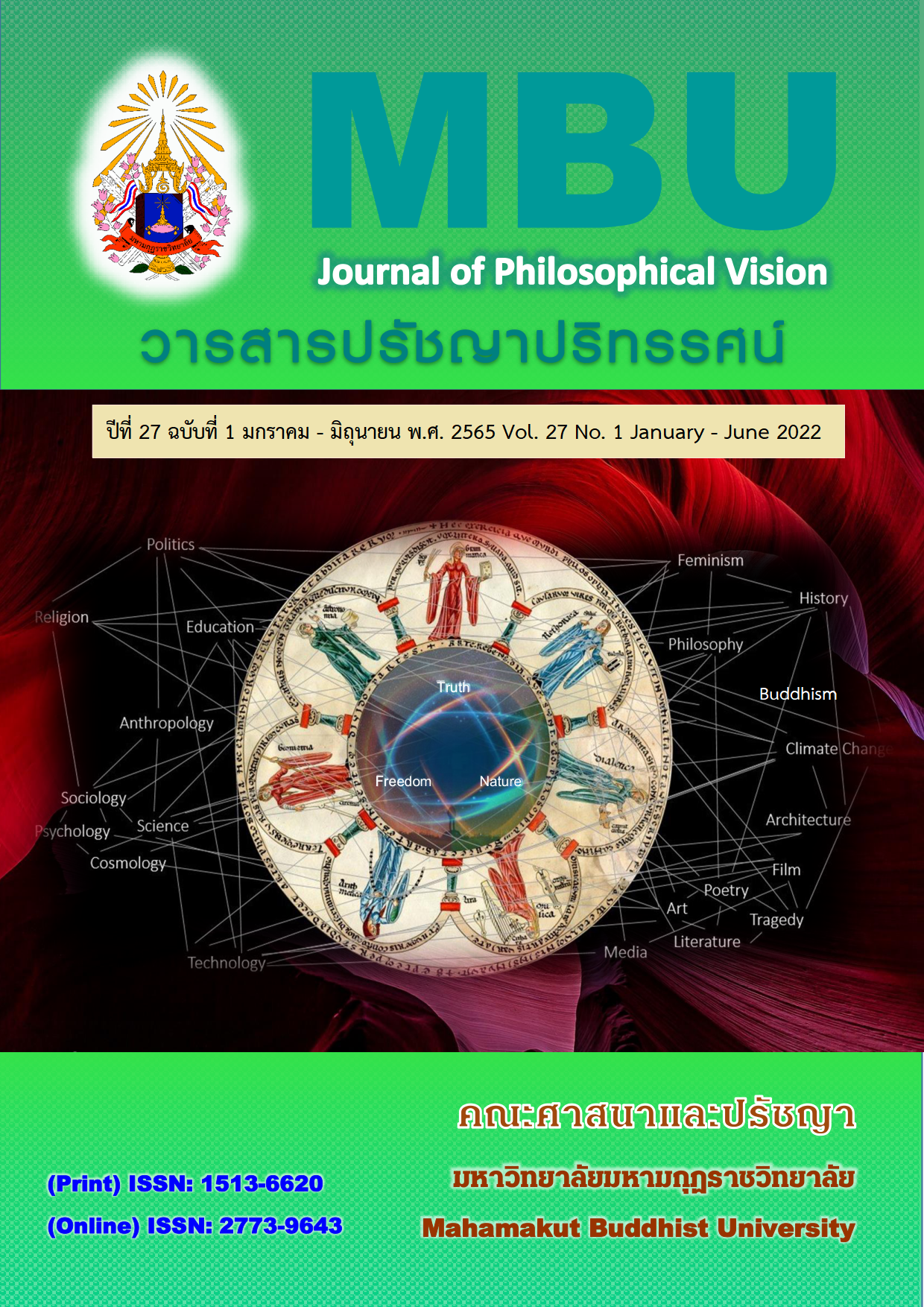แนวทางการแก้ปัญหาการกลั่นแกล้งรังแกกันในห้องเรียนชั้นประถมศึกษาด้วยการพัฒนาทักษะการเรียนรู้ทางอารมณ์และสังคม (Social and emotional learning : SEL)
คำสำคัญ:
การแก้ปัญหา, การกลั่นแกล้งรังแก, ทักษะการเรียนรู้ทางอารมณ์และสังคม, การประถมศึกษาบทคัดย่อ
วัตถุประสงค์ของบทความวิชาการนี้เพื่อศึกษาแนวทางการแก้ปัญหาการกลั่นแกล้งรังแกกันในห้องเรียนชั้นประถมศึกษาด้วยพัฒนาทักษะการเรียนรู้ทางอารมณ์และสังคม ซึ่งประกอบด้วย การกลั่นแกล้งรังแก ประเภทของการกลั่นแกล้ง บทบาทของผู้ที่เกี่ยวข้องในการกลั่นแกล้งรังแก ผลกระทบจากการถูกกลั่นแกล้งรังแก การแสดงออกเชิงพฤติกรรมของผู้ถูกกลั่นแกล้งเมื่อถูกกลั่นแกล้งรังแก วิธีที่คุณครูจะช่วยแก้ปัญหาเรื่องการกลั่นแกล้งรังแกและทักษะการเรียนรู้ทางอารมณ์และสังคม เป็นส่วนประกอบที่สำคัญที่จะช่วยให้แนวทางการแก้ปัญหาการกลั่นแกล้งรังแกกันในห้องเรียนชั้นประถมศึกษาด้วยพัฒนาทักษะการเรียนรู้ทางอารมณ์และสังคมบรรลุเป้าหมายได้อย่างสำเร็จ ทั้งนี้ขึ้นอยู่กับพ่อแม่ ผู้ปกครอง ครู และรวมถึงนักเรียนด้วย ที่จะต้องให้ความร่วมมือซึ่งกันและกัน
Downloads
เอกสารอ้างอิง
คมสันต์ เกียรติรุ่งฤทธิ์. (2562). การกลั่นแกล้งรังแก Bullying และ Cyberbullying (Online). https://www.newtv.co.th/news/38040 เข้าถึงข้อมูล 25/12/2564.
จิราเจต วิเศษดอนหวาย. (2564). ส่งเสริมทักษะทางอารมณ์และสังคม ด้วยห้องเรียนที่เป็นมิตรต่อความหลากหลายทางเพศ (Online). https://www.educathai.com/knowledge/ articles/530 เข้าถึงข้อมูล 25/12/2564..
นภัทร สิทธาโนมัย. (2559). ทักษะการเรียนรู้ทางอารมณ์และสังคม (social and emotional learning : SEL) (Online). http://www.thaipediatrics.org/Media/media-20200518145953.pdf, เข้าถึงข้อมูล 25 ธันวาคม 2564.
พิจิตรา เพชรปารี. (2562). วิธีที่คุณครูจะช่วยแก้ปัญหาเรื่องการกลั่นแกล้งรังแก (Online). https://www.thaihealth.or.th/Content/47649-, 25 ธันวาคม 2564.
วิมลวรรณ ปัญญาว่อง. (2562). การป้องกันและจัดการรังแกกันในโรงเรียน (Online). file:///C:/Users/Windows7/Downloads/204156, เข้าถึงข้อมูล 25 ธันวาคม 2564.
Adachukwu, M. N., Akaneme, I., & Ngwoke, D. U. (2020). Teachers’ techniques for controlling bullying behaviour among primary school pupils in Orumba-North local government area, Anambra State, Nigeria. Journal of the Nigerian Council of Educational Psychologists, 11(1): 192-201.
Cowie, H. (2020). Peer support in school. University of Malta.
Dwiningrum, S. I. A., Wahab, A. A., & Haryanto, H. (2020). Creative teaching strategy to reduce bullying in schools. International Journal of Learning, Teaching and Educational Research, 19(4), 343-355. https://doi.org/10.26803/ijlter.19.4.20.
Markkanen, I., Välimaa, R. & Kannas, L. (2021). Forms of bullying and associations between school perceptions and being bullied among Finnish secondary school students aged 13 and 15. International Journal of Bullying Prevention, 3: 24–33. https://doi.org/10.1007/s42380-019-00058-y.
Nansel, T. R., Overpeck, M., Pilla, R. S., Ruan, W. J., Simons-Morton, B., & Scheidt, P. (2001). Bullying behaviors among US youth: Prevalence and association with psychosocial adjustment. JAMA, 285(16): 2094–2100. https://doi.org/10.1001/jama.285.16.2094.
Olweus, D. (1991). Bully & victim problems among schoolchildren: Basic facts and effects of a school based intervention program. In D. J. Pepler & K. H. Rubin (Eds.), The development and treatment of childhood aggression (pp. 411–448). Lawrence Erlbaum Associates.
Pellegrini, A. D., Bartini, M., & Brooks, F. (1999). School bullies, victims, and aggressive victims: Factors relating to group affiliation and victimization in early adolescence. Journal of Educational Psychology, 91(2): 216–224. https://doi.org/10.1037/0022-0663.91.2.216.
Roberts, W. B., & Morotti, A. A. (2000). The bully as victim: Understanding bully behaviors to increase the effectiveness of interventions in the bully-victim dyad. Professional School Counseling, 4: 148-155.
Sharp, S., & Smith, P. K. (1991). Bullying in UK schools: The DES Sheffield Bullying Project. Early Child Development and Care, 77(1): 47-55. https://doi.org/10.1080/03004 43910770104.
Smith, P. K. & Brain, P. (2000). Bullying in schools: Lessons from two decades of research. Aggressive Behavior, 26(1): 1-9. https://doi.org/10.1002/(SICI)1098-2337(2000) 26:1<1::AID-AB1>3.0.CO;2-7.
Vaillancourt, T., Hymel, S., & McDougall, P. (2013). The biological underpinnings of peer victimization: Understanding why and how the effects of bullying can last a lifetime. Theory Into Practice, 52(4): 241-248. https://doi.org/10.1080/00405841 .2013.829726.
Zych, I., Ttofi, M. M., & Farrington, D. P. (2019). Empathy and callous–unemotional traits in different bullying roles: A systematic review and meta-analysis. Trauma, Violence, & Abuse, 20(1): 3–21. https://doi.org/10.1177/1524838016683456.
ดาวน์โหลด
เผยแพร่แล้ว
รูปแบบการอ้างอิง
ฉบับ
ประเภทบทความ
สัญญาอนุญาต
ลิขสิทธิ์ (c) 2022 วารสารปรัชญาปริทรรศน์

อนุญาตภายใต้เงื่อนไข Creative Commons Attribution-NonCommercial-NoDerivatives 4.0 International License.
บทความวิชาการและบทความวิจัย ในวารสารฉบับนี้ ถือเป็นความรับผิดชอบของผู้เขียนเท่านั้น
สงวนลิขสิทธิ์ตามพระราชบัญญัติลิขสิทธิ์






